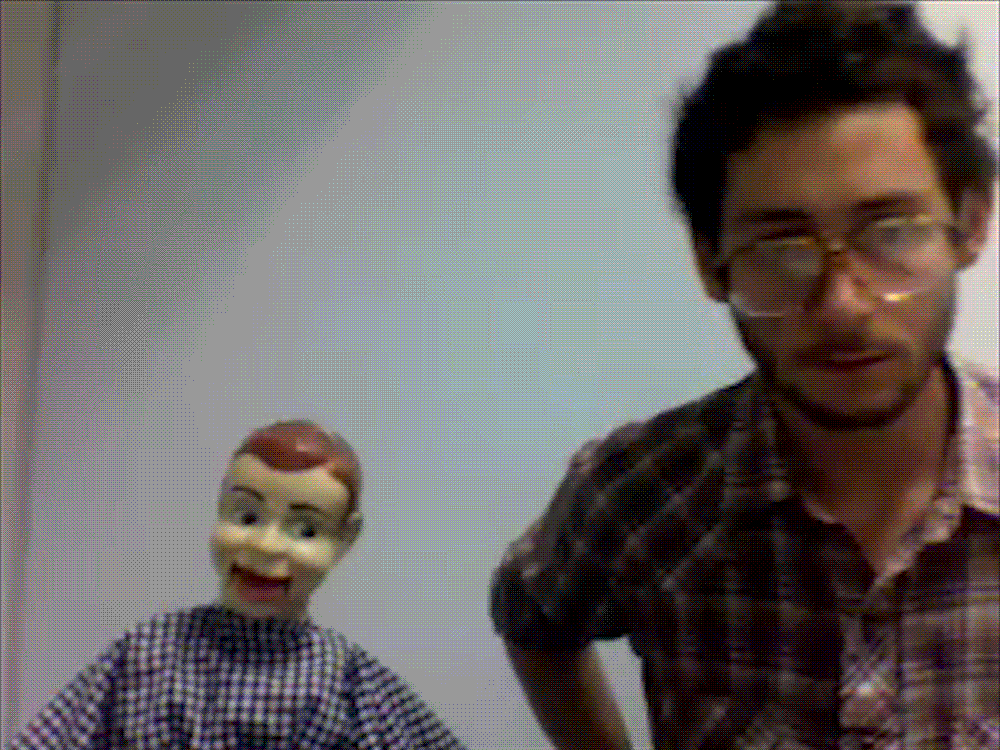Me. Dummy.
Tate Britain, London 2009
Barbican Art Gallery, London 2009
Stoke Newington International Airport, London 2009
The Basement, Brighton, UK 2009
RCA, London 2008
In many ways we rely on technology to be fully realised as humans, and in other ways it's a buffer between us and reality. Technology can, in actuality, keep us tied to the past and our notion of how we are meant to behave and what we are meant to become. Here, Ounanian explores the concept of 'human presence' and how it could be facilitated and enhanced by technology.
Me. Dummy. tackles these issues through a series of public conversations between Steven, his mother and the audience, via a robot.

Performance at the Barbican, 2010
Central to the development of Me. Dummy.'s human presence is an interview Ounanian held with Karl F. Macdorman; an android scientist who has studied this issue, and who worked with Hiroshi Ishiguro in developing his geminoid.
STEVEN: Do you think that it is possible for a robot to have more ‘Sonzai-kan’ or human presence than the actual human it is meant to represent?”
KARL: Just as more charismatic people have more stage presence than less charismatic people, android robots can be developed that have more stage presence than most human beings. To build them, we need an understanding of what factors can make some people seem “larger than life”.
STEVEN: I see...
KARL: I am loathe to say that a machine could have more human presence than a human being because, by definition, a machine is not human, and we don’t have a good operational definition of what human presence is yet. There seems to be more to human presence than just passing a Total Turing Test--that is, convincing someone that an embodied human-looking entity is human though a whole bodied interaction with it.

Hiroshi Ishiguro and his geminoid. Still from 'Mechanical Love' directed by Phie Ambo.
The Uncanny Valley: an often frightening, liminal space between things that look real, and things that are real.
Masahiro Mori, author of 'The Buddha and the Robot', thought that a robot could achieve 'buddhahood', and that rather than attempting to emulate human presence, technology has a unique presence of its own. The following diagram shows how this idea of 'robot buddhahood' corresponds to the uncanny quality of technology.

Modified graph of the 'Uncanny Valley' 2009
